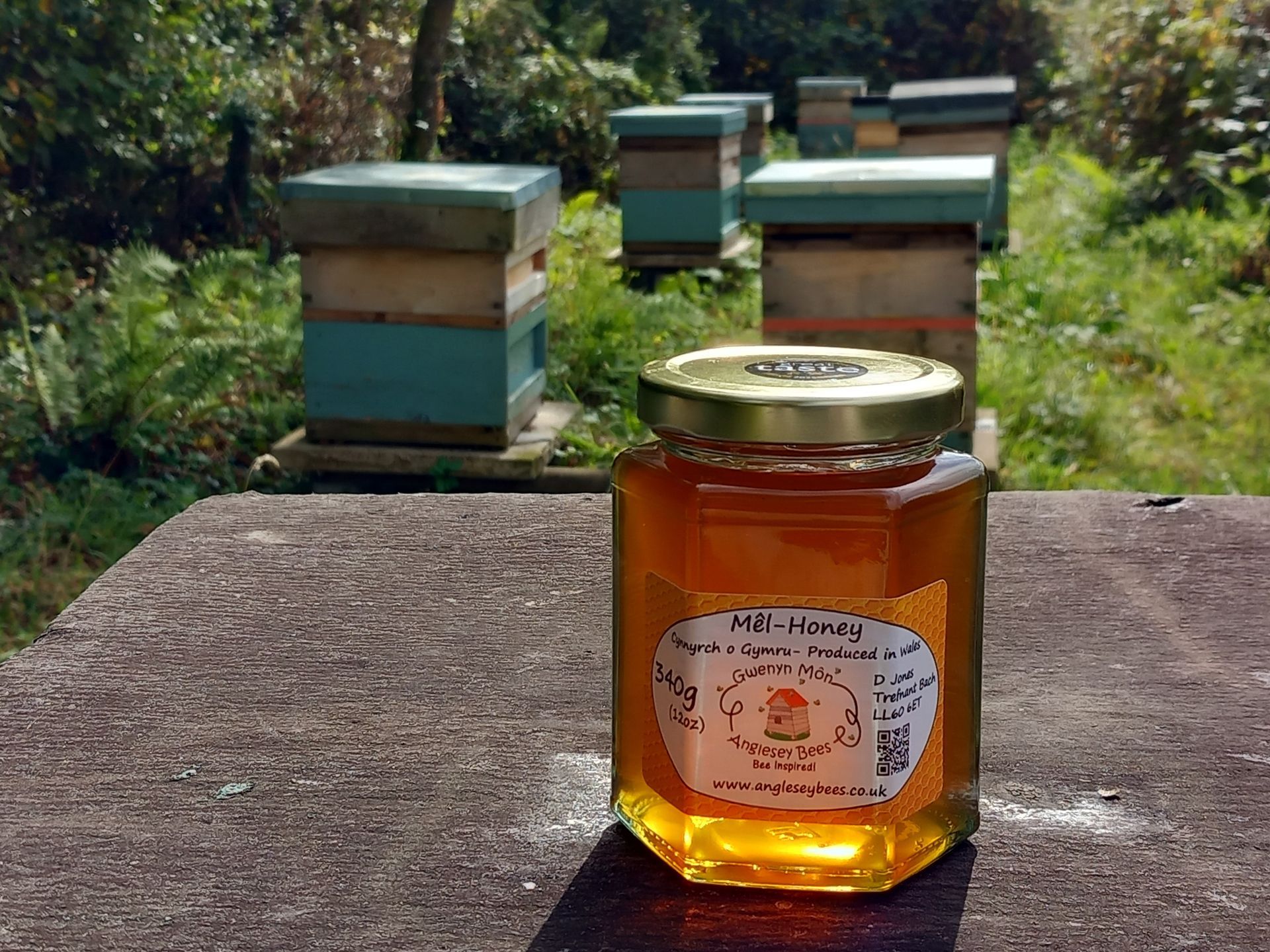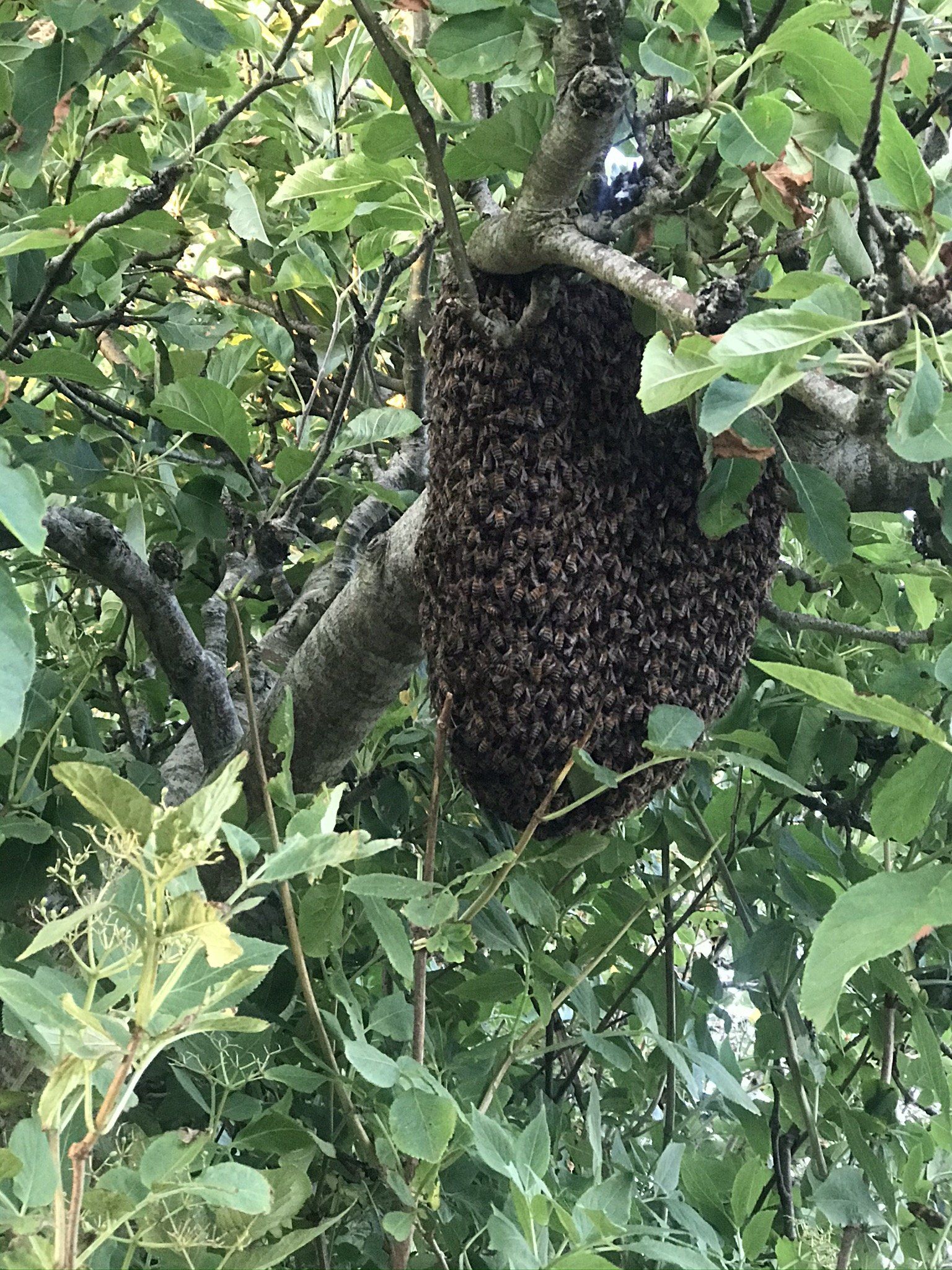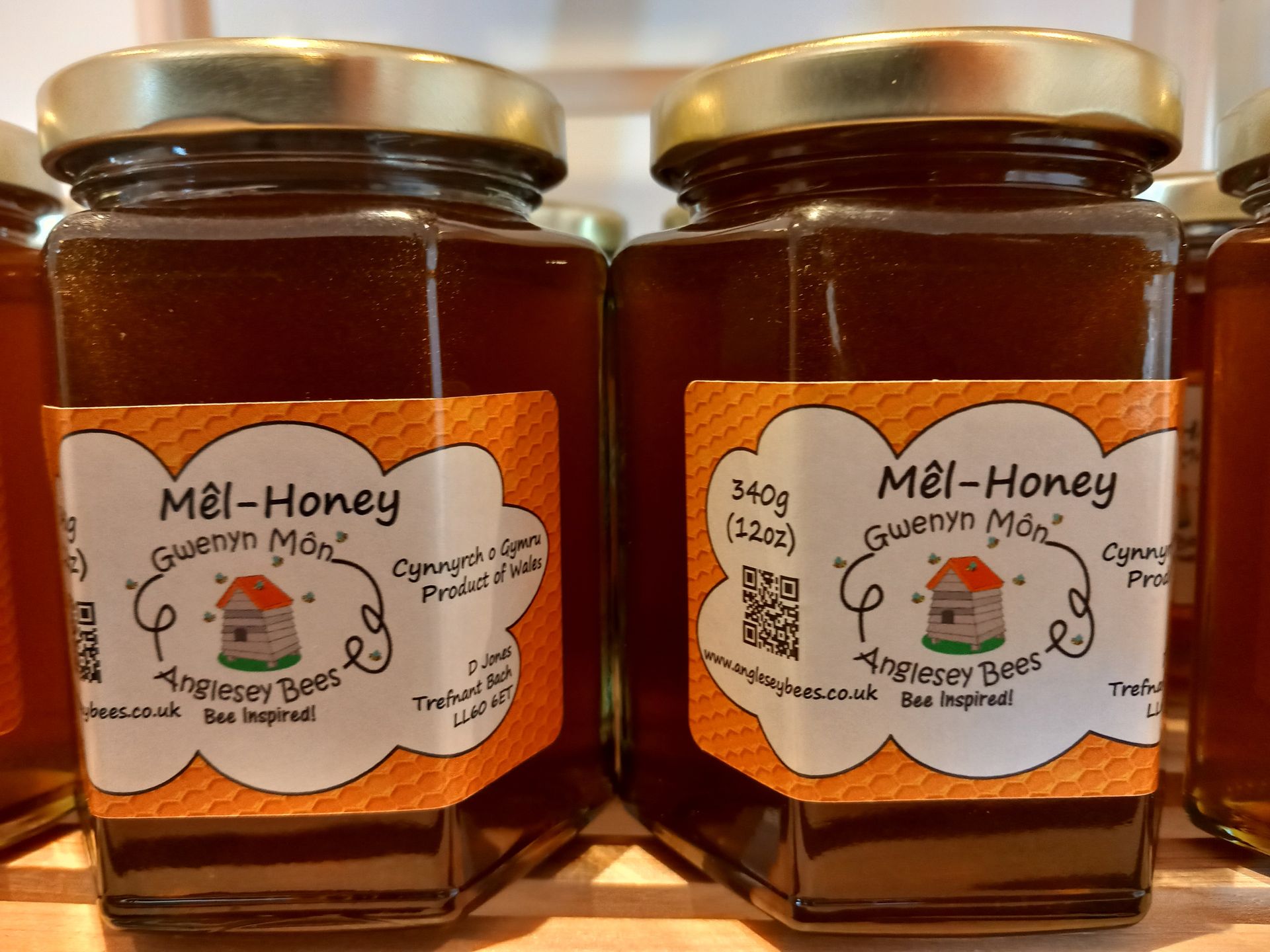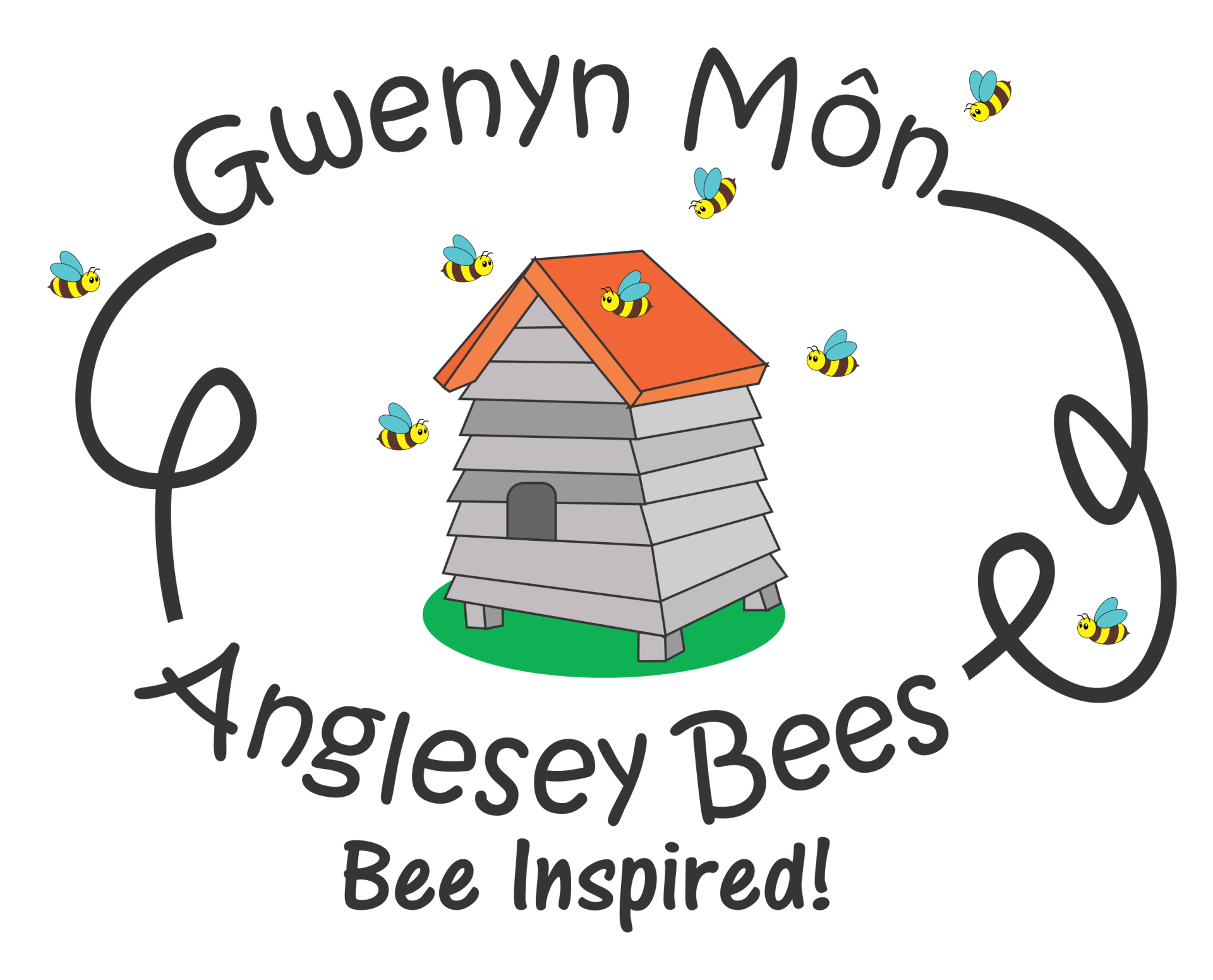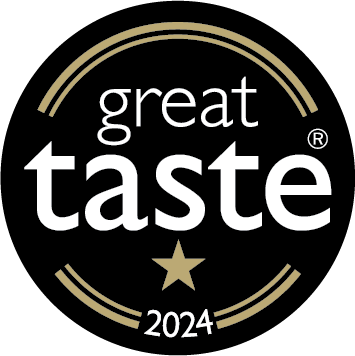Summer 2025 Newsletter, Anglesey Bees
Cymraeg isod.
Spring honey now for sale!
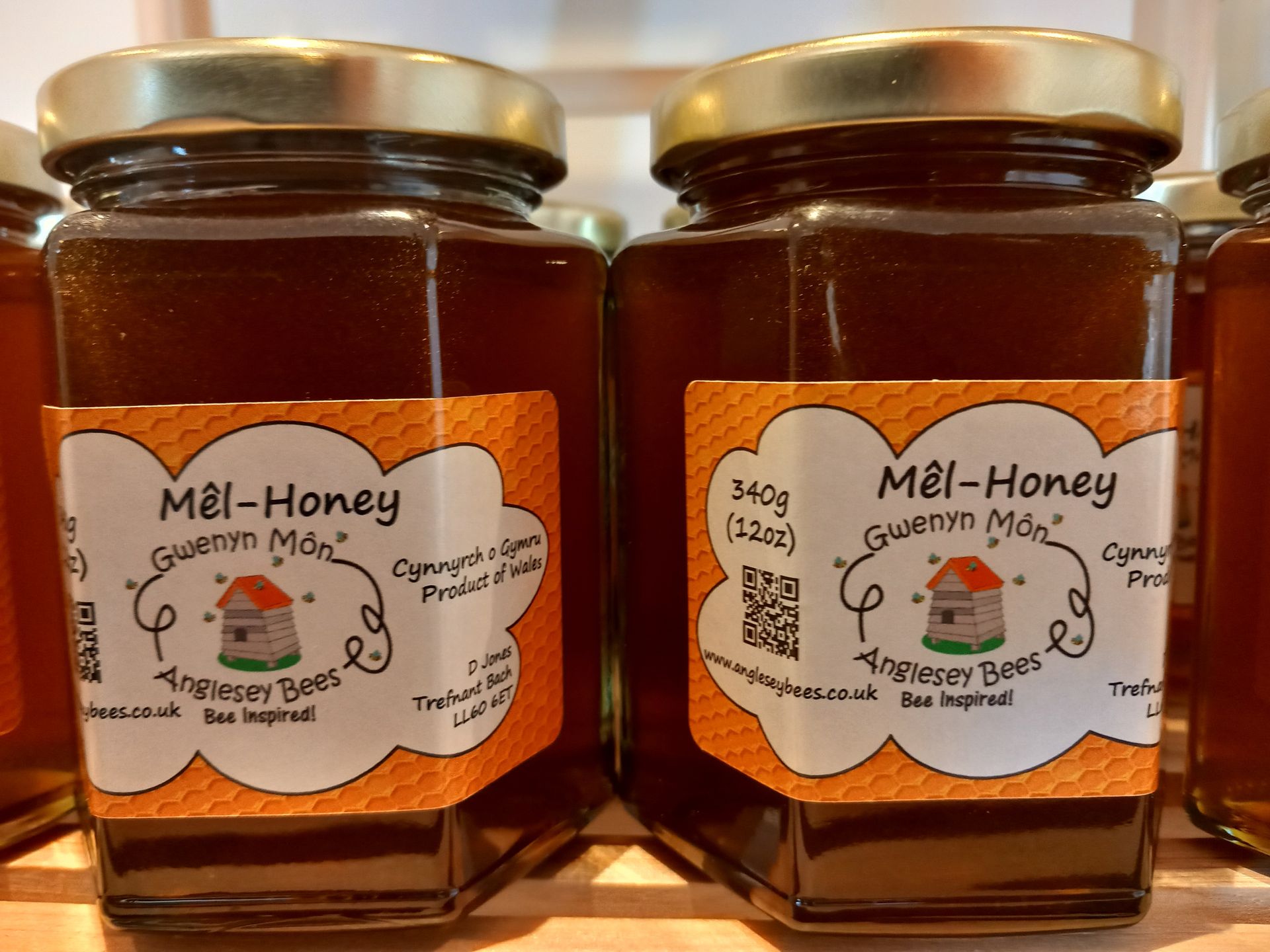
Outreach events
Through out our quieter autumn and winter seasons we were invited to give illustrated talks on our lives as beekeepers to many organisations including U3A various dinner clubs and societies. Furthermore, we were invited back to deliver meet the beekeeper events at Plas Cadnant Hidden Gardens and at the National Trust Bodnant Gardens.
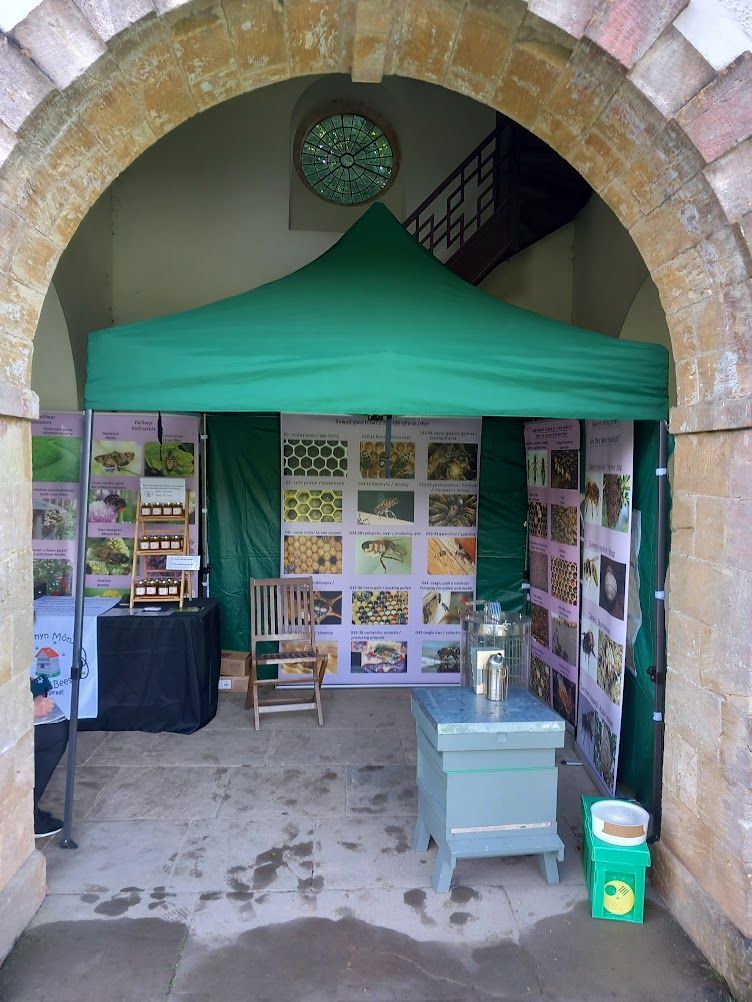
Farming Connect mentoring
We are supporting and mentoring a growing number of beekeepers, including complete beginners, under the Farming Connect scheme. Mentees with a minimum of 3ha of land are entitled to up to 15 hours of free mentoring at our site and theirs.
Collaborating with and learning from other commercial beekeepers

As new members of the Bee Farmer's Association and Food and Drink Wales' Honey Cluster, we at Anglesey Bees have gained accreditation as commercial beekeepers and honey producers. Membership of these two organisations opens opportunities to develop our enterprise further by collaborating with other businesses.
Beekeeping experiences and courses
Since the beginning of April, our highly acclaimed two-day beginner courses, improver course and beekeeping experiences, ranging from our 90 minutes "meet the bees" to our half-day "bee curious" and "beekeeper for the day" experience have been in big demand.

Often, our events are attended by family groups. Since we erected a gazebo in the apiary, we can continue to host events, despite what the weather throws at us.
Many attend our beekeeping events after receiving a gift voucher as a birthday or mother's day present or come to celebrate a wedding anniversary or honeymoon.
Wales Food and Drink Award
We are proud to have been a finalist for the Sustainable Values Awards in this year's Wales Food and Drink Awards.

Mêl y gwanwyn ar werth rwan!

Fel gwenynwyr, rydym yn ymwybodol iawn o'r tymhorau a'r patrwm tywydd. Soniais mewn blog blaenorol sut y byddai patrwm tywydd cefnforol La Nina yn creu amodau mwy ffafriol yn 2025. Wel, ni allwn fod yn fwy cywir! Roedd yr amodau ar gyfer y gwenyn yn y gwanwyn y gorau erioed, gyda chnwd rhagorol o bob gwenynfa.
Canlyniad y cyfnod hir o dywydd sych drwy Ebrill a Mai oedd "bwlch Mehefin" cynnar yn llif y neithdar yng nghanol mis Mai. Hwylusodd hyn i ni gynaeafu'r mêl yn gynnar. Bu'r gwenyn yn ymweld a choed a llwyni blodeuog y gwanwyn gan gynnwys draenen wen, masarn, castan, ceirios, afal a gellyg. Mae'n fêl amber ei liw, trwchus, hylifol a llyfn. Mae ganddo arogl cynnes, coediog, cyfoethog, gyda nodau cryf o fanila a masarn (maple) a siocled yn y blas.
Mae ein mêl gwanwyn ar gael i'w gasglu'n bersonol o'n cyfeiriad yn Llanddaniel. Fel arall, gallwch ei archebu ar y wefan ar gyfer dosbarthiad gan Royal Mail Parcels neu o siopau gan gynnwys Cigydd Glandwr, Benllech; Anglesey Fine Foods, Y Fali a Gerddi Cudd Plas Cadnant, Porthaethwy.
Sgyrsiau a chyflwyniadau
Drwy'r hydref a'r gaeaf, fe'n gwahoddwyd i roi sgyrsiau darluniadol ar ein ffordd o fyw fel gwenynwyr i nifer o sefydliadau a chymdeithasau gan gynnwys U3A, clybiau cinio amrywiol a chymdeithasau merched. Yn ogystal, fe'n gwahoddwyd yn ôl i gyflwyno digwyddiadau cwrdd â'r gwenynwyr yng Ngerddi Cudd Plas Cadnant a gan yr Ymddiriodolaeth Genedlaethol yng Ngerddi Bodnant.

Mentora Cyswllt Ffermio
Rydym yn cefnogi ac yn mentora nifer gynnyddol o wenynwyr, gan gynnwys dechreuwyr drwy gyfrwng cynllun mentora Cyswllt Ffermio. Mae mynediad i hyd at 15 o fentora am ddim ar gael i unigolion efo isafswm o 3ha o dir.
Profiadau a chyrsiau cadw gwenyn
Ers dechrau mis Ebrill, bu yna alw mawr am ein cyrsiau deuddydd i ddechreuwyr, cyrsiau gloywi a phrofiadau cadw gwenyn, sy'n amrywio o'n profiad 90 munud "cwrdd â'r gwenyn" i'n profiad hanner niwrnod "cael blas ar gadw gwenyn" a'n profiad "gwenynwr am y diwrnod".

Yn aml, caiff ein digwyddiadau eu mynychu gan grwpiau teuluol. Ers i ni godi gazebo yn y wenynfa, gallwn barhau i gynnal digwyddiadau, waeth beth bynnag mae'r tywydd yn ei daflu arnom. Mae llawer yn mynychu ein digwyddiadau ar ôl derbyn tocyn anrheg ar gyfer penblwydd, Sul y Mamau neu i ddathlu pen-blwydd priodas neu fis mêl.
Cydweithio a dysgu oddi wrth gwenynwyr masnachol eraill

Fel aelodau newydd o Gymdeithas Ffermwyr Gwenyn a Chlwstwr Mêl Bwyd a Diod Cymru, mae Gwenyn Mon wedi ennill achrediad fel ffermwyr gwenyn masnachol a chynhyrchwyr mêl. Mae bod yn aelod o'r ddau sefydliad hyn yn agor cyfleoedd i ddatblygu ein menter ymhellach trwy gydweithio a busnesau eraill.
Anrhydeddau Food and Drink Wales
Rydym yn falch ein bod wedi cyrraedd y rownd derfynol yn y dosbarth Gwerthoedd Cynaliadwy eleni.

Comment on my blog

